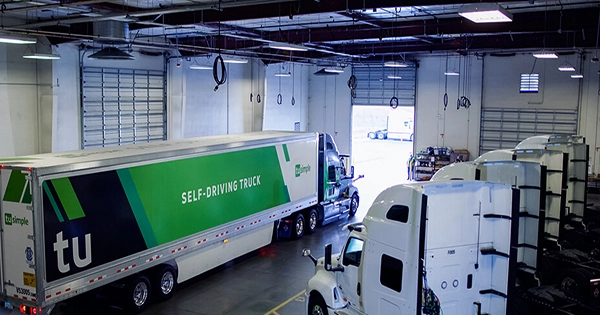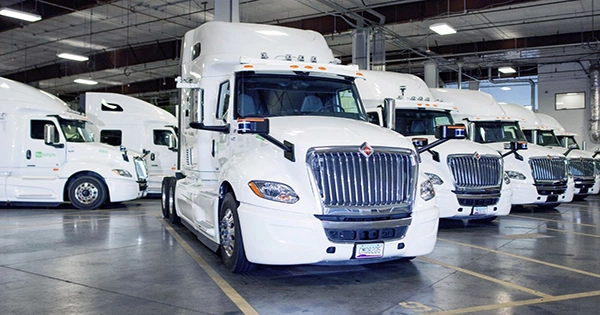TuSimple, a self-driving truck company, said it is close to testing its system on public roads without a human safety operator by the end of the year. TuSimple revealed intentions to proceed with its driver-out pilot program during its third-quarter earnings conference on Wednesday, which will remove the driver for runs across the 80-mile route between the Phoenix and Tucson cities. During the call, Cheng Lu, TuSimple’s president, and CEO stated, “We intend to do the initial driver runs by year-end and to complete the pro pilot program over the next months.”
“As a reminder, the driver-out pilot will be conducted over many weeks and is an important component of continuing technological development in several areas, including software, hardware, and go-to-market.” The fact that we are solving for both known and unknown things that we could face on public roadways makes the driver-out pilot program so difficult. Noncompliant vehicles, unanticipated road work, and changing driving conditions are all examples of things that must be constantly monitored and accounted for in real-time.”
If TuSimple can start this initiative before 2022, the firm will be in a strong position against the competition. For example, Kodiak Robotics has only recently driver-out testing on confined rails. Embark is not presently testing without a human safety driver on public highways, but it is anticipating a pilot in 2023 and commercial driver-out operations in 2024.

Waymo Via is now testing with two autonomous specialists in the cab of the car, one in the driver’s seat and the other working as a software technician. Einride, a Swedish freight firm that just commenced operations in the United States, has been operating without a human driver in Europe for a few years, but will only be doing so in the United States at its partner GE Appliances’ restricted to campus.
According to TuSimple’s financial report, “in the next weeks, we plan to ‘freeze’ our technological development so that it may be deployed in final test runs on open roads with a safety driver and on a test track with no person inside the car.” “Our safety case will be informed and validated as a result of this test phase.” Our team will be allowed to proceed with removing the driver from the car for our 80-mile run on public roads when we finish the safety certification procedure.”
TuSimple believes its technology is ready to operate very autonomously, at least on a limited stretch of road, and will spend the next several weeks proving its safety argument. “Systems safety” and “operations safety” are the two key categories for the company’s driver-out safety case validation. According to Lu, system safety ensures that the vehicles are safe to run autonomously by ensuring that each component of the system is trustworthy, fail-safe, adequate, and proved. “By building safe processes and procedures, operations safety helps each area of our driving operations to be prepared and proved,” added Lu.
“Operation Safety certifies that we have observed and triaged every possible driving occurrence, assessed the event’s level of a safety risk, and assigned it to engineering teams for resolution.” TuSimple has several obstacles in the Tier 1 supply chain to get through the driver-out testing and actually deploy additional vehicles on the road after the pilot. Lu predicted supply chain problems and workforce shortages in the near future. The supply chain maturity, according to TuSimple, is the biggest barrier to the large-scale implementation of autonomous technologies in the end.
“It all boils down to crucial Tier 1 component like computation, autonomous Domain Controller (ADC), or redundant actuation, steering, and braking,” Lu explained. “And so there’s a bit of a chicken-and-egg situation here because Tier 1s don’t want to commit to investments without orders, which is something we’ve highlighted as a concern and are taking efforts to address… We’ll make further announcements in the future quarters about spending more aggressively in the supply chain to guarantee that we can fulfill the schedule that we discussed.”
















